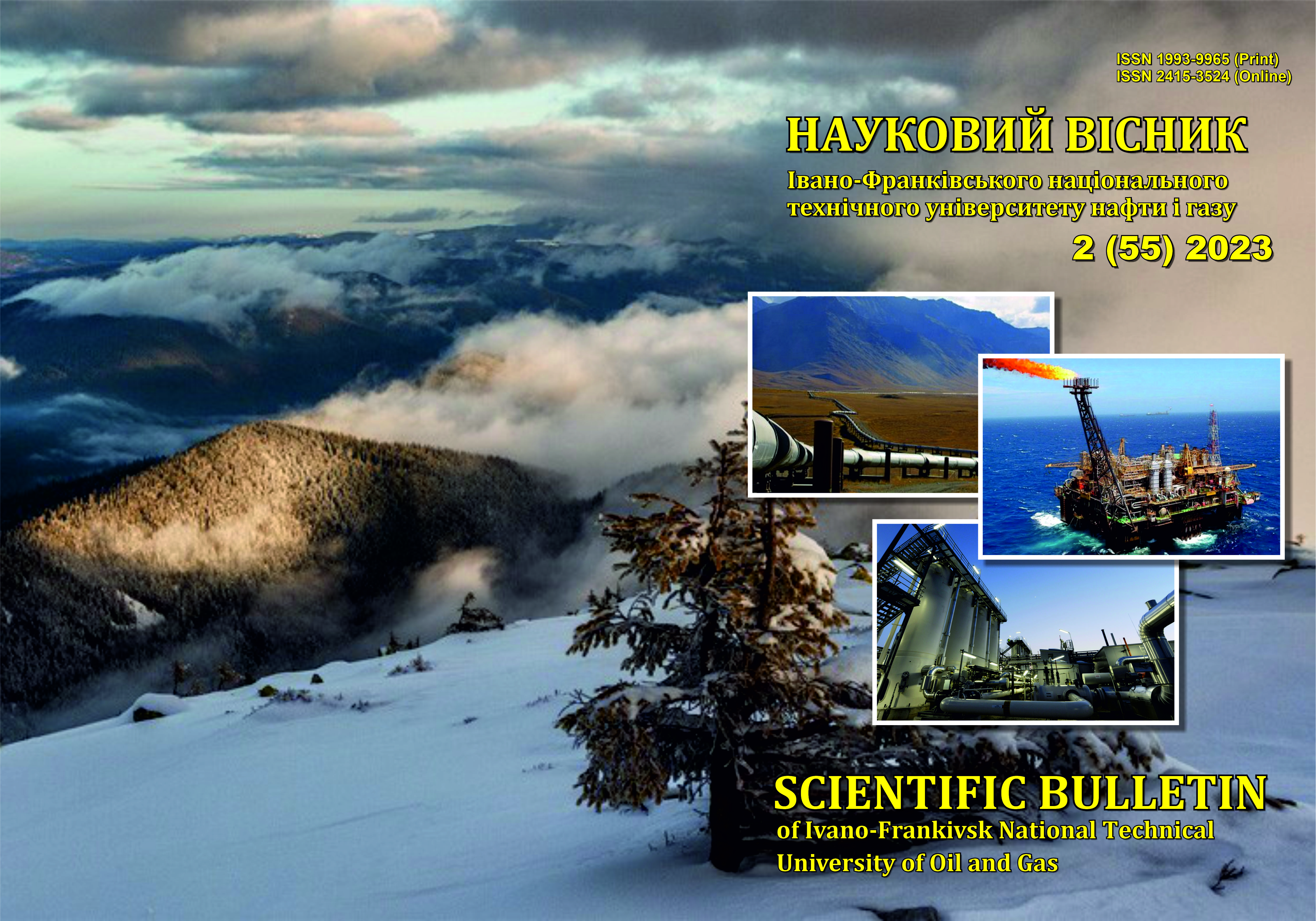Geometric modeling of the Power Skiving process for cutting the external crown gear
DOI:
https://doi.org/10.31471/1993-9965-2023-2(55)-31-39Keywords:
modeling, undeformed chip, gear cutting, Power Skiving, cup-type cutter, cutter, gear.Abstract
Gear cutting operations are among the most labor-intensive processes in any manufacturing facility. Currently, a progressive method that is increasingly employed by leading companies worldwide specializing in gear wheel production is Power Skiving. A Computer-Aided Design (CAD) environment was utilized to model such a process, showcasing gear cutting with the highest available precision. In this article, a solid model of the Power Skiving process is developed, and a 3D model of undeformed chip formation is constructed for the practical case of external gear cutting. The process described in these investigations can be equally applied to both internal and external gear cutting scenarios. To imitate the cutting process, all motions are considered at specified time points and set in precise positions. The geometry of the produced gear tooth can be examined to determine the profile morphology, tooth root shape, and the forces and thermal processes involved in cutting. The modeling findings demonstrate the model's capacity to faithfully and precisely reproduce the Power Skiving cutting process. The model's information can help us understand the cutting process and optimize it.
Downloads
References
Monden T., Kikuchi T., Yoshikawa K., Fujimura N., Georgoussis A. Super Skiving Cutter: An Innovative Process Modification for Gear Skiving. Mitsubishi Heavy Industries Technical Review.2019. Vol. 56(1). P. 1-7. https://www.mhi.co.jp/technology/review/pdf/e561
/e561110.pdf
Olivoni E., Vertechy R., Parenti-Castelli V. Power skiving manufacturing process: A review. Mechanism and Machine Theory. 2022. Vol. 175. P. 104955. https://doi.org/10.1016/ j.mechmachtheory.2022.104955
Nagata E., Tachikawa T., Nakahara Y., Kurita N., Nakamura M., Iba D., Moriwaki I. Gear skiving for mass production. The Japan Society of Mechanical Engineers. In The Proceedings of the JSME international conference on motion and power transmissions. 2017. P. 02-13. https://doi.org/10.1299/jsmeimpt.2017.02-13
Inui M., Huang Y., Onouka H., Umezu N. Geometric simulation of power skiving of internal gear using solid model with triple-dexel reprerentation. Procedia Manufacturing. 2020. Vol. 48. P. 520-527.
Bergs T., Georgoussis A., Löpenhaus C. Development of a numerical simulation method for gear skiving. Procedia CIRP. 2020. Vol. 88. P. 352-357. https://doi.org/10.1016/ j.promfg.2020.05.078
Bauer R., Dix M.. Novel method for manufacturing herringbone gears by power skiving. Procedia CIRP, 2022. Vol. 112. P. 310- 315. https://doi.org/10.1016/j.procir.2022.09.003
Vargas B., Zapf M., Klose J., Zanger F., Schulze V. Numerical modelling of cutting forces in gear skiving. Procedia CIRP. 2019. Vol. 82. P. 455-460. https://doi.org/10.1016/ j.procir.2019.04.039
Guo Z., Mao S. M., Huyan L., Duan D. S. Research and improvement of the cutting performance of skiving tool. Mechanism and Machine Theory. 2018. Vol. 120. P. 302-313. https://doi.org/10.1016/j.mechmachtheory.2017. 08.004
Fang Z., Ren Z., Shu L., Kizaki T., Sugita N. A parametric modeling for fast radial infeed planning process in gear skiving. Mechanism and Machine Theory. 2022. Vol. 174. P. 104909. https://doi.org/10.1016/j.mechmachtheory.2022. 104909
Huang K., Yu J., Wang J., Zhang C., Wan L. A vectorization model to closed-form solution for cutting forces prediction during face-hobbing of hypoid gears. Mechanism and Machine Theory. 2022. Vol. 173. P. 104824. https://doi.org/10.1016/ j.mechmachtheory.2022.104824
Antoniadis A., Vidakis N., Bilalis N. A simulation model of gear skiving. Journal of Materials Processing Technology. 2004. Vol. 146(2). P. 213-220. https://doi.org/10.1016/ j.jmatprotec.2003.10.019
Apprich T., Brenner J., Dambacher M., Dreher F., Fischer G., Greiner G., Hochstatter A. Tabellenbuch für Zerspantechnik. In Europa- Fachbuchreihe für Metallberufe. Verlag Europa- Lehrmittel. 2020. https://bsz.ibs-bw.de/ aDISWeb/app?service=direct/0/Home/$DirectLink &sp=SOPAC15&sp=SAKSWB-IdNr1727857992
Li J., Wang P., Jin Y. Q., Hu Q., Chen X. C. Cutting force calculation for gear slicing with energy method. The International Journal of Advanced Manufacturing Technology. 2016. Vol. 83. P. 887-896. DOI: 10.1007/s00170-015-7630-0
Klocke F., Brecher C., Löpenhaus C., Ganser P., Staudt J., Krömer M.. Technological and simulative analysis of power skiving. Procedia Cirp. 2016. Vol. 50. P. 773-778. https://doi.org/ 10.1016/j.procir.2016.05.052
Hrytsay I., Stupnytskyy V., Slipchuk A. Simulation of a Power Skiving Gear Cutting Process. Strojnícky časopis-Journal of Mechanical Engineering. 2023. Vol. 73(1), P. 103-116. DOI: 10.2478/scjme-2023-0008.
Tapoglou N. Calculation of non-deformed chip and gear geometry in power skiving using a CAD-based simulation. The International Journal of Advanced Manufacturing Technology. 2019. Vol. 100(5). P. 1779-1785. DOI: 10.1007/s00170-018-2790-3
Antoniadis A. Gear skiving – CAD simulation approach. Computer-Aided Design. 2012. Vol. 44(7), P. 611-616. DOI: 10.1016/j.cad.2012.02.003.
Onozuka H., Tayama F., Huang Y., Inui M. Cutting force model for power skiving of internal gear. Journal of Manufacturing Processes. 2020. Vol. 56, P. 1277-1285. DOI: 10.1016/j.jmapro.2020.04.022
Hrytsay I., Slipchyk A., Bosansky M. Justification of the choice of parameters for the gear power skiving operation based on computer simulation. Journal of Mechanical Engineering – Strojnicky Casopis. 2023. Vol. 73(2), P. 33–44. DOI: 10.2478/scjme-2023-0020.
Downloads
Published
How to Cite
Issue
Section
License
Авторські права....


1.png)

















